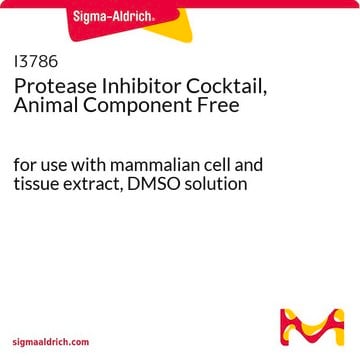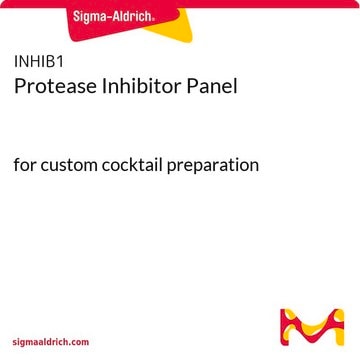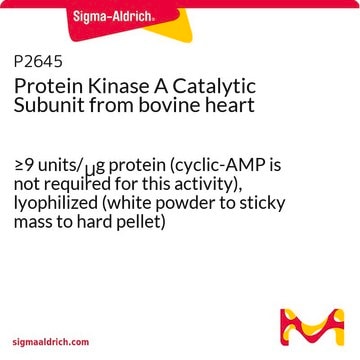535142
Protease Inhibitor Cocktail I
Animal-Free, lyophilized, for the inhibition of serine, esterases, cysteine, trypsin-like and metalloproteases. This small molecule/inhibitor is primarily used for Protease Inhibitors applications.
Synonym(s):
Animal-Free Protease Inhibitor Mix, Protease inhibitor
About This Item
Recommended Products
product name
Protease Inhibitor Cocktail Set I, Animal-Free, The Protease Inhibitor Cocktail Set I, Animal-Free controls the activity of Protease. This small molecule/inhibitor is primarily used for Protease Inhibitors applications.
form
lyophilized
manufacturer/tradename
Calbiochem®
storage condition
OK to freeze
desiccated (hygroscopic)
shipped in
wet ice
storage temp.
−20°C
General description
Application
- as a supplement in cell lysis buffer to extract proteins from non-small-cell lung carcinoma (NSCLC) cell lines
- in NP-40 buffer to lyse the cells for sodium dodecyl sulfate-12% polyacrylamide gel electrophoresis (SDS-PAGE) and western blotting
- as a component in lysis buffer to lyse transfected Huh7 cells and to wash the pellets to detect hepatitis B virus (HBV) C protein phosphorylation in the cell
Biochem/physiol Actions
Warning
Reconstitution
Legal Information
Signal Word
Danger
Hazard Statements
Precautionary Statements
Hazard Classifications
Acute Tox. 4 Inhalation - Eye Dam. 1 - Skin Corr. 1A - STOT RE 2 Inhalation
Target Organs
Respiratory Tract
Storage Class Code
8A - Combustible corrosive hazardous materials
WGK
WGK 3
Regulatory Listings
Regulatory Listings are mainly provided for chemical products. Only limited information can be provided here for non-chemical products. No entry means none of the components are listed. It is the user’s obligation to ensure the safe and legal use of the product.
PRTR
Class I Designated Chemical Substances
JAN Code
535142-1SET:
535142-1LML:
535142-ML:
535142-1ML:
Certificates of Analysis (COA)
Search for Certificates of Analysis (COA) by entering the products Lot/Batch Number. Lot and Batch Numbers can be found on a product’s label following the words ‘Lot’ or ‘Batch’.
Already Own This Product?
Find documentation for the products that you have recently purchased in the Document Library.
Customers Also Viewed
Our team of scientists has experience in all areas of research including Life Science, Material Science, Chemical Synthesis, Chromatography, Analytical and many others.
Contact Technical Service

















